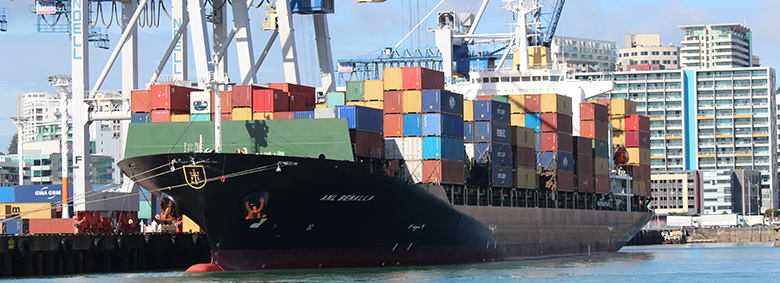This month, the Minister of Transport released the revised National Freight Demand Study.

This is an important piece of work for everyone working to improve the safe and efficient movement of freight.
The study provides a snapshot of New Zealand’s current freight task and a forecast of what the future freight task will look like over the next 30 years. It helps us better understand what is happening in the world of supply chains, production, consumption and logistics.
New Zealand’s freight task is projected to increase by about 50 per cent over the next 30 years, with freight volumes in the Auckland and Canterbury regions projected to grow by 78 per cent and 73 per cent respectively. Some commodities have reduced as a result of economic conditions, while others - notably exports - have seen tremendous growth.
Across New Zealand this growth will mean an extra 137 million tonnes (or an extra 13 billion tonnes/kilometres) of freight moved by 2042. Currently there is about 50 tonnes of freight moved each year for every person in New Zealand; by 2040 this will increase to 67 tonnes per person. Keeping in mind we will have a larger population then too.
This increase will also generally fall on the modes as they currently are, with road moving 70% of the current and future freight task (in terms of tonne-kilometres). Rail has increased its proportion of the freight task by 1% to 16%, evidence perhaps that the Government’s investment in KiwiRail’s Turnaround Plan is bearing fruit. Coastal shipping is moving more in terms of volumes with its share of the total freight task at 14%. New Zealand’s economically vital airfreight, particularly the import/export airfreight through Auckland International Airport, weighs little so cannot be compared in this way.
So what does this all mean for the Transport Agency and New Zealand? The report tells us that the road freight task is still growing, and our critically important export task has and will grow significantly. Just to illustrate the State highway network carried 1.8 billion kilometres worth of heavy vehicle trips in 2004/05, by 2012/13 this had increased to almost 2 billion heavy vehicle kilometres travelled. Clearly the function of our road and rail links to our major national and regional ports are becoming even more critical. There are already productivity and capacity constraints on a number of them, which our current investment programme is addressing by ensuring that freight movements to and from ports are predictable, safe and timely. So our work to upgrade the key nationally strategic routes in and around our biggest cities, and to and from our ports and airports, will need to continue to help manage the forecast growth. This puts more onus on the freight plans we are facilitating and the discussions we are having with ports, industry and local councils to ensure these critical parts of the freight network are future-proofed for this growth.
The forecast growth, particularly in road freight, also shows the value of getting more freight on fewer trucks. Absorbing some of this growth onto existing vehicle fleets by upgrading them to high productivity motor vehicles (HPMVs), including 50MAX will help defer capital investment in additional trucks, it will also mean drivers can drive less to deliver more freight and it will help reduce the crash exposure risk that more truck trips would have created.
The information in this Study will add to the freight planning discussions and allow private sector, local government and central government decision-makers to test the findings and implications of the report and expand our understanding of what is needed to move freight safety and efficiency forward.
As Minister Brownlee says, this study provides useful information for planning at both a nationwide and regional level.
Harry Wilson, NZ Transport Agency Freight Portfolio Director